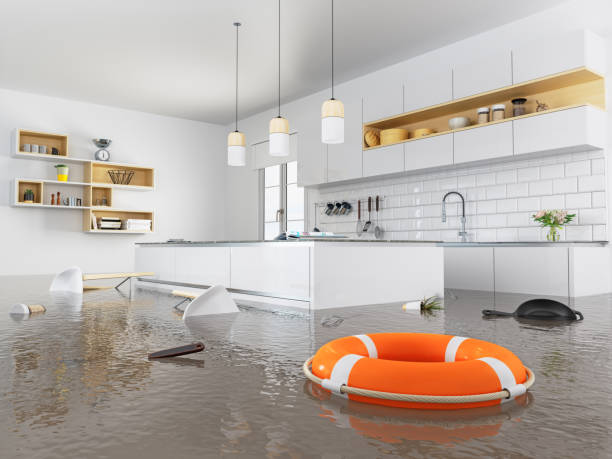Severe water damage caused by flooding is devastating to a family and challenging to clean up. Unsurprisingly, it’s confusing where to start water damage restoration from as time is limited to saving valuables. With safety hazards a concern, stopping structural damage on the house will only occur once repairs and restorations have started to prevent additional water damage. Here are steps to properly take the case of water damage in your home after a flood.
Turn Off the Power
Protecting all your family members is essential, and turning off the power will ensure that there’s no risk of electrocution to any of them. It will also protect valuables and appliances in the home from further damage. However, if you have to enter a flooded section of the house to turn off the power, it’s advisable to call an electrician to make sure all the electricity is turned off for sure, especially if you don’t know which break you will need to switch off.
Adopt Protective Gear
Floodwaters contain many contaminants that can make a family severely ill. Wear protective gear such as overalls, rubber boots, and gloves to protect your body from any bacteria contained in the water. It also protects from cuts as items are sprawled everywhere. Of course, it’s best to avoid the water if possible. However, if you need to get valuable items out of your house, make sure you are safe. You might need to purchase protective clothing if you don’t have any on hand. Make sure you never take any risks when it comes to entering a flooded area of your home though.
Start Water Damage Inspection
Water damage restoration should start no later than 48 hours after the floodwaters have been rescinded. Start by placing a lift on wooden furniture to get it off the floor, allowing drying and preventing further carpet staining. Depending on the level of water damage, some may need to be disposed of. It’s also essential to inspect the flooring, drywall, and insulation to examine the extent of the damage. You may need replacing the drywall. Besides, determine the amount of work your home requires depending on what is salvageable. If extensive water restoration damage is necessary, you should contract the services of a restoration company. They will have the right tools and knowledge for handling flooding and water damage. If it’s not dealt with the correct way, it can continue causing damage to your home.
Drying Out
After removing all the water inside the home, some specific areas can remain damp due to humidity. Use central air conditioning or get a dehumidifier to remove the excess water. If the restoration has started days after the flooding occurred, a professional water restoration contractor comes in handy for a dry home to avoid mold and mildew growth. Depending on the extent of mold growth, removing some sections of the house to stop its spread is necessary to save the structure. Drying out your home can seem like it takes a long time. However, it’s important to be patient and make sure it’s fully dry before putting flooring back in.
Water damage restoration after the home is dry takes a longer time if the house is uninsured. The move back to the home is made after assessment by the insurance company and local government. Make sure you have adequate flood insurance for your home because you never know when you might face this emergency. Follow the above steps for handling flooding correctly and keeping you, your family, and home safe.















